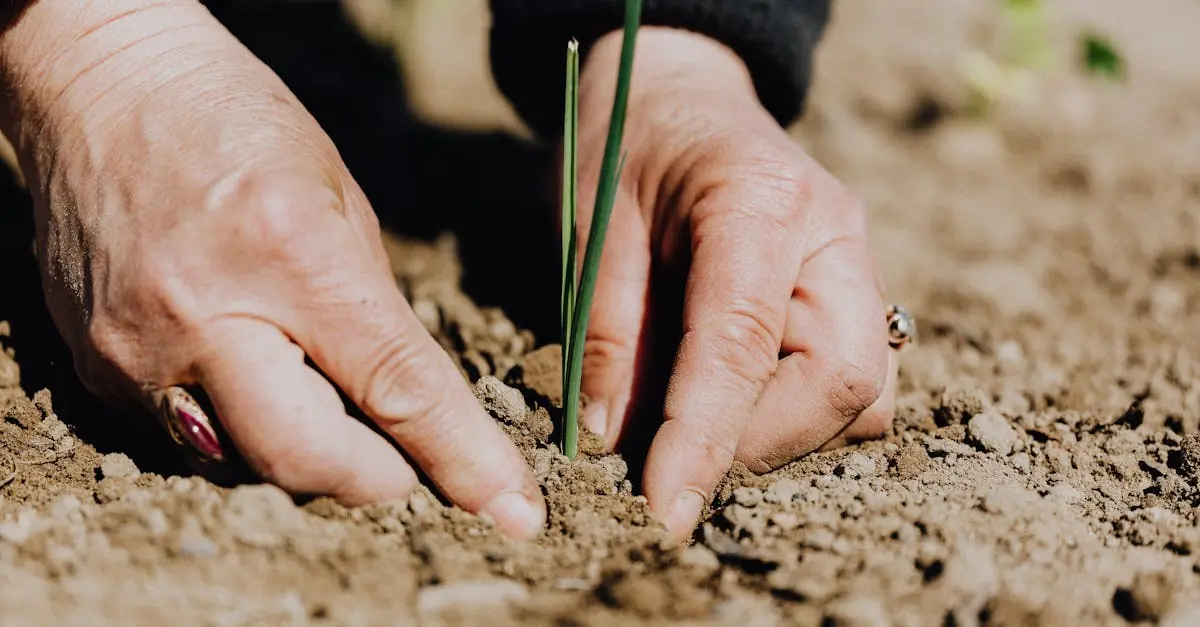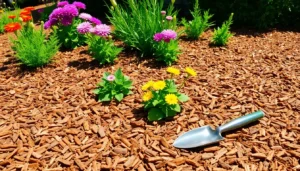If you think snake plants are just for indoor air purification, think again! These hardy green warriors can thrive outdoors too, turning your garden into a lush oasis. With their striking upright leaves and low-maintenance charm, they’re like the cool kids of the plant world—effortlessly stylish and always ready to impress.
But before you toss them into your backyard and call it a day, there’s a bit more to outdoor snake plant care than meets the eye. From sunlight preferences to watering habits, these plants have their quirks. So grab your gardening gloves and get ready to learn how to make your snake plants the envy of the neighborhood—because who wouldn’t want the most stylish plants on the block?
Table of Contents
ToggleUnderstanding Snake Plant Needs
Snake plants thrive outdoors when provided with the right conditions. Understanding their specific needs ensures healthy growth and vibrant foliage.
Ideal Outdoor Conditions
Bright, indirect light supports optimal growth for snake plants outdoors. They adapt to partial shade, making them suitable for various garden settings. Well-draining soil is critical to prevent root rot. Sandy or cactus mixes work well, allowing excess moisture to escape. Regular temperatures between 60°F and 80°F (15°C to 27°C) enhance their development. During extreme weather, provide some protection from harsh sunlight or frost.
Common Varieties for Outdoor Growth
Several snake plant varieties flourish outdoors. Sansevieria trifasciata, commonly known as the mother-in-law’s tongue, boasts tall, upright leaves and striking patterns. Sansevieria cylindrica features round, cylinder-like leaves that add a unique texture to gardens. Varieties such as Sansevieria moonshine offer lighter, silvery-green foliage that brightens shaded areas. Overall, these adaptable plants bring both style and resilience to outdoor spaces.
Preparing for Outdoor Planting
Preparing for outdoor planting of snake plants involves careful planning to ensure optimal growth. Selecting a suitable location and meeting soil requirements play crucial roles in their success.
Choosing the Right Location
Choosing the right location for snake plants ensures they receive the ideal light conditions. While these plants prefer bright, indirect light, they tolerate partial shade. A spot that avoids harsh afternoon sun protects the leaves from potential burns. Wind protection proves beneficial, as strong gusts can cause damage. Accessibility for watering and maintenance also remains significant. Inspecting the microclimate of the chosen area helps gauge temperature variations and humidity levels. Evaluating surrounding plants can aid in creating a harmonious garden design while considering growth patterns.
Soil Requirements
Soil requirements for snake plants emphasize the importance of drainage. Well-draining soil prevents root rot, a common issue in overly saturated conditions. A mix of potting soil and sand or perlite improves drainage. The right pH range between 6.0 and 7.0 promotes healthy growth. Nutrient-rich soil enhances overall plant vigor, yet snake plants thrive even in less fertile conditions. Regular soil testing assists in maintaining optimal nutrient levels. Adding organic matter like compost may bolster soil health and moisture retention while ensuring the roots remain dry.
Watering Guidelines
Watering snake plants outdoors requires attention to detail. Proper management of their watering needs ensures vibrant growth and healthy foliage.
Frequency and Techniques
Water snake plants every 2 to 6 weeks, adjusting based on weather conditions and soil moisture. During hot months, increase frequency to every 2 to 3 weeks for optimal hydration. Conversely, water sparingly in cooler months, as they prefer drier soil. To check soil moisture, insert a finger into the soil up to 2 inches. If it feels dry, it’s time to water. Use a hose or watering can to apply water directly to the base, avoiding the leaves to prevent rot. Ensure excess water drains away quickly to keep roots from sitting in stagnant moisture.
Signs of Overwatering
Recognizing signs of overwatering is crucial for snake plant health. Yellowing leaves often indicate that the plant absorbs too much moisture. Leaf softness and dropping leaves further signal waterlogged conditions. Mold or fungus may appear on the soil surface in severe cases of overwatering. If these symptoms arise, evaluate watering practices immediately. Allow the soil to dry out completely before re-watering, ensuring the plant receives adequate air circulation around its roots.
Sunlight Requirements
Snake plants thrive best in specific sunlight conditions, making their outdoor placement crucial. They prefer bright, indirect light, which mimics their natural habitat.
Optimal Sun Exposure
Direct sunlight can lead to leaf burn, so it’s essential to filter intense rays. Morning sunlight is beneficial and can boost growth, while afternoon heat poses risks. An ideal location is one that receives filtered light or partial shade. If possible, place snake plants under taller plants or structures to protect them from harsh sunlight. Regularly monitor the plants for signs of stress or inadequate light, adjusting their position as needed.
Dealing with Extreme Heat
Extreme heat can stress snake plants, particularly in summer months. Providing extra shade during peak temperatures helps prevent damage. In cases of prolonged heat, consider moving them to a cooler area or adding a protective barrier. Adequate hydration supports their resilience, especially when temperatures soar. Observing the plant’s condition regularly can help identify potential issues. Adapting care strategies during heat waves will ensure vibrant growth and longevity.
Pest and Disease Management
Outdoor snake plants can encounter pests and diseases that affect their health. Regular monitoring helps catch any issues early.
Common Pests to Watch For
Aphids and spider mites often target snake plants, causing leaf discoloration and curling. Mealybugs, which resemble tiny cotton masses, can infest the leaf axils, depriving plants of nutrients. Scale insects cling to stems and leaves, creating a sticky residue that attracts ants. Fungal infections sometimes develop in overly moist conditions, leading to potential rot. Growing awareness of these threats allows for timely interventions.
Preventive Measures
Regular inspections play a crucial role in maintaining snake plant health. Keeping the surrounding area clean and debris-free helps reduce pest attraction. Applying neem oil or insecticidal soap can act as a natural pest deterrent if infestations occur. Ensuring proper drainage prevents moisture buildup that invites fungal diseases. Spacing plants appropriately improves air circulation, further minimizing disease risk.
Seasonal Care Tips
Proper seasonal care enhances the growth and resilience of outdoor snake plants. Different seasons bring unique challenges and requirements.
Spring and Summer Care
During spring and summer, snake plants thrive with increased sunlight and warmth. Higher temperatures mean adjusting watering frequency to every 2 to 4 weeks, depending on soil moisture. Placing snake plants in a bright, indirect light location encourages healthy growth. Ensuring they receive adequate shade in extreme heat prevents leaf burn. Additionally, regular inspections for pests become essential as these seasons often invite unwanted visitors. Keeping a close eye allows for early detection and prompt treatment if needed.
Fall and Winter Considerations
In fall and winter, temperatures drop, necessitating care adjustments. Watering should decrease, typically to every 4 to 6 weeks, as the plants enter a dormant phase. Providing protection from cold drafts is crucial to prevent damage. Snake plants fare best with slightly lower light levels during these months, making indirect light ideal. It helps to monitor soil moisture closely, allowing soil to dry out completely before re-watering. Fungal infections can be a concern in colder, damp conditions, so proper drainage remains vital during this period.
Caring for snake plants outdoors can transform any garden into a vibrant and stylish space. By understanding their specific needs for sunlight and watering it’s possible to ensure these resilient plants thrive. Regular monitoring for pests and adjusting care with the seasons will keep them healthy and flourishing.
With the right preparation and attention to detail snake plants can enhance outdoor aesthetics while providing the air-purifying benefits they’re known for. Embracing their versatility allows gardeners to enjoy the beauty and practicality of snake plants in a variety of settings.







